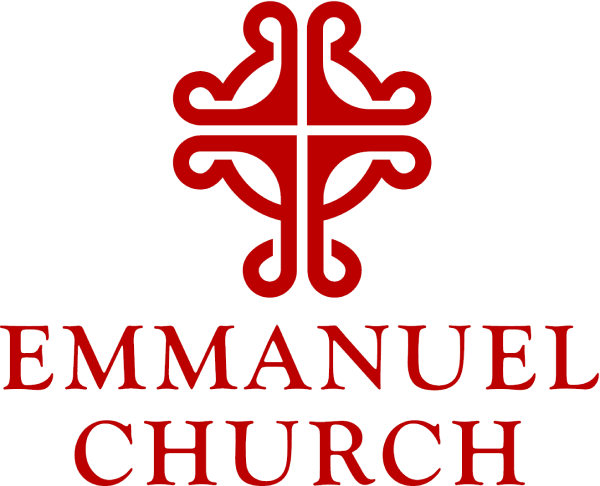
The Most Excellent Journey of the Magi
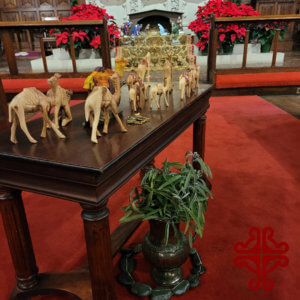
By this point in our relationship — yours and mine — I’ve probably long ceased to surprise you with my love for camels, and my absolute conviction of their profound theological symbolism. You’ll notice that our handsome humped friends have been on the move throughout Advent and now Christmastide, drawing nearer to the manger. There are even two more camels who have joined the herd heading to Bethlehem — they arrived from Jerusalem just Friday from my friend Ibrahim on Nablus Road, just to help us all find the manger. We’ll all get there in four days or so — in time for Epiphany.
I do love camels, with their improbable but uniquely appropriate construction and ungainly elegance. It’s today’s gospel from Matthew, describing the magi who came from the East following the star, that has prompted us over the millennia to think of camels. Luke’s gospel doesn’t mention camels at the manger. Camels are God’s own purpose-built sand cargo vehicles — uniquely suited to carry great burdens for long distances over difficult terrain from exotic origins. For that reason, camels point to the magi, the focus and subject of today’s gospel.
Magi
Despite what we don’t know about the magi, we do know that they are super important. Matthew’s gospel tells us that the magi immediately capture the attention of everyone in Jerusalem — including and especially King Herod — as they show up in Jerusalem, from only God knows where, asking about the king of the Jews. The magi are shrouded in the mystery of Matthew’s gospel’s spare detail. Who were they? Where did they come from? How many of them were there? Why did they come? What were they — Astrologers? Magicians? Royalty? Prophets? Were they Asian, African, Indo-European? Was their skin black, white, brown, pink, umbre, or sepia? Did they follow any known faith? We don’t know any of these things. We don’t even know for sure that all of them — or any of them — are men.
 There’s a wonderful meme that goes around at Christmas on Facebook, about the wise women who show up at Jesus’ birth, bringing useful gifts. As the story goes, the wise women asked for directions (instead of following a star), and therefore arrived on time, helped deliver the baby, cleaned the stable, made a casserole and brought disposable diapers as gifts.
There’s a wonderful meme that goes around at Christmas on Facebook, about the wise women who show up at Jesus’ birth, bringing useful gifts. As the story goes, the wise women asked for directions (instead of following a star), and therefore arrived on time, helped deliver the baby, cleaned the stable, made a casserole and brought disposable diapers as gifts.
Tradition tells us that they were three kings, but we infer their number from the three named gifts — gold, frankincense and myrrh — but notice that the gospel actually says that the magi opened their treasure chests and gave Jesus gifts made of those three materials, so even the inference of three from the three named materials pulled from the unknown number of treasure chests is not mandatory.
We get to the magis’ royalty from the value of these extravagant gifts — only kings could afford them — and also from the way Herod immediately summons them to court, like they were old friends from King school or something. We actually know nothing about them but their name — magi. They could be any of us — or more aptly, any of us could be one of them: striving — probably with the help of handsome, sturdy, sure-footed camels — long distances over rough terrain to join up with Jesus and show others the way.
More Magi
I’ve known some magi in our time, and I’m sure you have too. Given our tradition arising from the three named gifts of gold, frankincense, and myrrh, I’ll mention three magi. And because we don’t know whether magi are astrologers, magicians, royalty, or prophets, we’ll call them all sages — meaning wise people. Notice the sage from my garden with the camel caravan on the chancel.
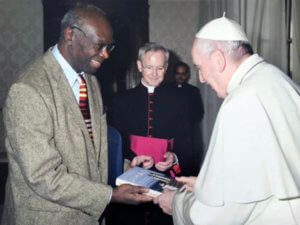 I think especially today of one of my favorite professors at Yale Divinity School, Lamin Sanneh, who died unexpectedly — although with characteristic elegant and appropriate timing — on Epiphany in 2019, while I was living in Jerusalem. Professor Sanneh was descended from a long line of West African kings, and was raised Muslim in The Gambia but converted to Roman Catholicism. His final book, Beyond Jihad, came out weeks before my class with him in the fall of 2017, and was the focal point of the course. He drew our focus to the role that camels — the ships of the sand sea — played in transporting goods and ideas throughout the Sahara, shaping centers of learning, commerce, faith, and community. Through Professor Sanneh’s eyes, I saw that camels were humped, handsome, sure-footed, load-bearing metaphors for the distance and difficulty of our journey to faith, and the unique way each of us finds our own path as we walk along beside them. Lamin Sanneh, descended from West African kings, pointed the way to the manger.
I think especially today of one of my favorite professors at Yale Divinity School, Lamin Sanneh, who died unexpectedly — although with characteristic elegant and appropriate timing — on Epiphany in 2019, while I was living in Jerusalem. Professor Sanneh was descended from a long line of West African kings, and was raised Muslim in The Gambia but converted to Roman Catholicism. His final book, Beyond Jihad, came out weeks before my class with him in the fall of 2017, and was the focal point of the course. He drew our focus to the role that camels — the ships of the sand sea — played in transporting goods and ideas throughout the Sahara, shaping centers of learning, commerce, faith, and community. Through Professor Sanneh’s eyes, I saw that camels were humped, handsome, sure-footed, load-bearing metaphors for the distance and difficulty of our journey to faith, and the unique way each of us finds our own path as we walk along beside them. Lamin Sanneh, descended from West African kings, pointed the way to the manger.
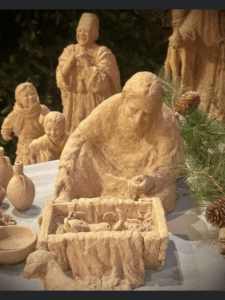 Archbishop Desmond Tutu, who died just this past Sunday at the age of 90, was also a modern day sage. He and Professor Sanneh knew each other of course. The Arch, as he was called, was born in South Africa in a farming town near Johannesburg. His father was a teacher, and his mother was a domestic servant. Unlike Professor Sanneh and Nelson Mandela — the first black African president of South Africa — Archbishop Tutu was not descended from royalty and wasn’t even involved in politics until he’d been a priest for many years.
Archbishop Desmond Tutu, who died just this past Sunday at the age of 90, was also a modern day sage. He and Professor Sanneh knew each other of course. The Arch, as he was called, was born in South Africa in a farming town near Johannesburg. His father was a teacher, and his mother was a domestic servant. Unlike Professor Sanneh and Nelson Mandela — the first black African president of South Africa — Archbishop Tutu was not descended from royalty and wasn’t even involved in politics until he’d been a priest for many years.
Tutu came to politics through his realization of ubuntu — the African word for hospitality — meaning an open and welcoming attitude that is willing to share, and to be generous and caring. Ubuntu is the knowledge that human existence is inextricably bound up with God’s creation, and a solitary human being is a contradiction in terms. Archbishop Tutu often said, I need other persons to become a person myself. Archbishop Desmond Tutu is a modern day sage. He is even depicted as one of the magi in the beautiful manger scene at the Washington National Cathedral. His figure is carved clearly showing his impish eyes, broad grin, and joyful upraised hands.
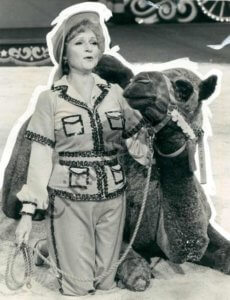 Third — just because we don’t know where the sages came from, whether they are women or men, or what their role is back home, I propose Betty White, gone on to God just this week, as the third modern day sage. Betty White — an American, a woman, and a comic actress whose roles endured into her nineties — might be the most improbable, and therefore fitting, sage of all. With her salty observations and her lack of obvious religious piety, her roles challenged set expectations for women by spoofing — and thereby highlighting — our own judgments of others. She had the uncanny ability to ask a guileless question that exposed an inconvenient truth — much like the magi in Matthew’s gospel. They asked “where is this baby king,” and the question itself brought Herod and all of Jerusalem to their knees.
Third — just because we don’t know where the sages came from, whether they are women or men, or what their role is back home, I propose Betty White, gone on to God just this week, as the third modern day sage. Betty White — an American, a woman, and a comic actress whose roles endured into her nineties — might be the most improbable, and therefore fitting, sage of all. With her salty observations and her lack of obvious religious piety, her roles challenged set expectations for women by spoofing — and thereby highlighting — our own judgments of others. She had the uncanny ability to ask a guileless question that exposed an inconvenient truth — much like the magi in Matthew’s gospel. They asked “where is this baby king,” and the question itself brought Herod and all of Jerusalem to their knees.
We can all walk with the sages as they journey to Jesus and away from Herod’s reign in Jerusalem. No one can be excluded from their social group, as we have no idea what that group might even be. Even if the sages came from an East no farther from Jerusalem than the easy walk down from the top of the Mount of Olives, their foreignness to the regime in Jerusalem allows anyone at all — Lamin Sanneh, Desmond Tutu, Betty White, or you and me — to seek the baby king in the manger. Amen
